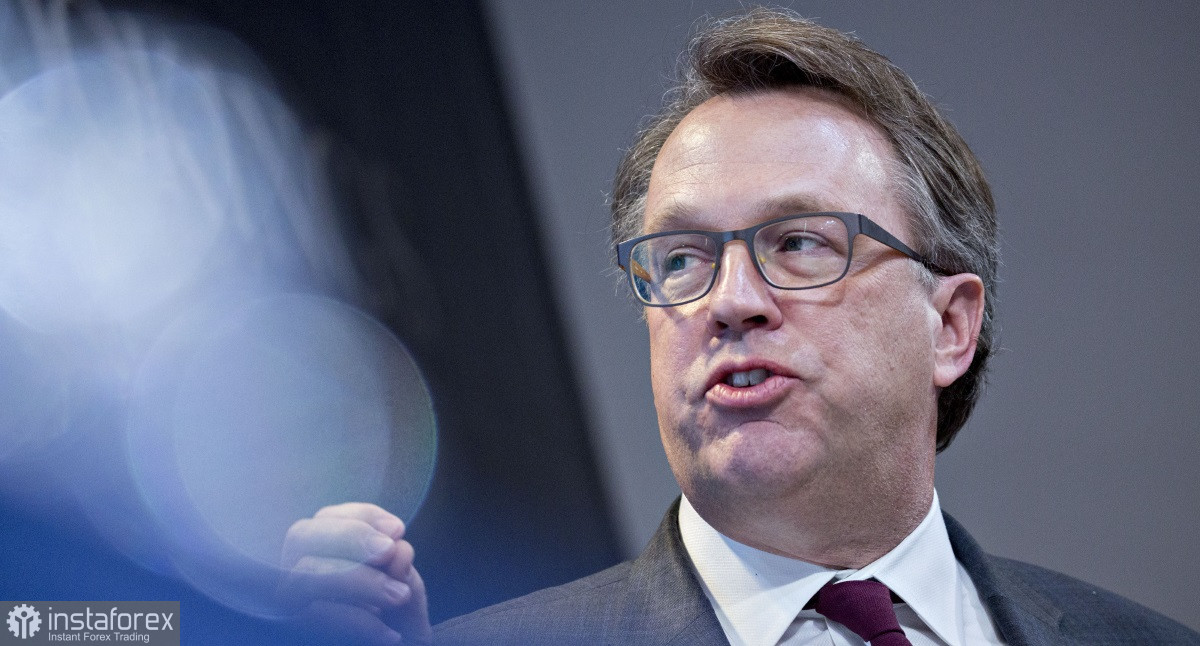Demand for the US dollar revived but risk assets were on the back foot yesterday, unable to assert their strength. Most trading instruments remained in a range-bound market, though some of them, for example, the pound sterling, managed to update an intraday high.
Yesterday, traders welcomed a speech by Federal Reserve Bank of New York President John Williams. He said that the forecasts presented by the Fed in December are still valid, serving as a barometer to predict further interest rate moves this year. Perhaps the central bank will decide to pursue its restrictive monetary policy to curb inflation longer than expected – for a few years.

"That still seems like a very reasonable idea of what we need to do this year to balance supply and demand and bring down inflation," John Williams said during a discussion with the Wall Street Journal on Wednesday in New York. He also noted that the rate-setting committee raised interest rates by a quarter percentage point last week, bringing their benchmark interest rate target to a range of 4.5% to 4.75%. This move was the first moderation in monetary policy from the Fed's previous aggressive rate hikes. The markets treated this move as a good omen. However, the Federal Reserve was caught off-guard by the upbeat employment report and has to revise their rhetoric which reinforced the US dollar.
Williams said further increases of a quarter percentage point "seem like the right size," but he added the pace of further hikes would depend on incoming data. "The inflation outlook is clearly very uncertain and there are definitely scenarios where inflation becomes more resilient for a variety of reasons," he said. "For me, the most important thing is that we need a sufficiently restrictive attitude and we need to achieve a sufficiently restrictive attitude in politics," he added. "We need to keep that going for a couple of years to make sure we get inflation to 2%, and then over time we'll probably get interest rates back to more normal levels."
It goes without saying that the Federal Reserve will revise its rhetoric now and then. Apparently, the labor market will suffer from high interest rates sooner or later. In turn, this will lead to a sharp slowdown in economic growth, thus weakening the US dollar against other assets. For this reason, it is prudent to make medium-term forecasts for investing in risky assets. Most investors stick to this strategy nowadays. It is more reasonable than betting on the US dollar's strength in the short term. It doesn't matter how many times the US Fed will increase interest rates. Meanwhile, investors are trying to puzzle out how long the central bank will hold interest rates at highs and when it will begin lowering them. These questions are given priority now.
John Williams also said that wage growth remains way above the level which corresponds to the Fed's target of 2%. The policymaker underscored persistent price pressure in the services sector, except for house prices, food, and energy prices. "That's the area of the job market and the economy where I think we still have this supply-demand imbalance," he said. Fed officials "need to focus on reconciling this with 2% inflation."
The technical picture of EUR/USD tells us that the currency pair is trading under strong selling pressure. At present, no one believes that the ECB will go ahead with its hawkish policy. To halt the bear trend, EUR/USD has to settle above 1.0720. This will encourage a spike to 1.0770. With a break above this level, the instrument will easily climb to 1.0800 with the prospect of updating to 1.0830. In case EUR/USD declines, the selling pressure could escalate if the bulls fail to protect the support at 1.0720. In turn, the price will slide to 1.0680 with the prospect of a fall to the low of 1.0650.
Speaking about GBP/USD, the currency pair has been stuck in a range after a two-day slump. The bulls can gain the upper hand on the condition they hold the price above 1.2070. Only a breakout of this resistance will cement hope for a recovery to 1.2140. Once this price action is over, the instrument will be able to jump sharply to 1.2200. The currency pair could come under pressure again if the bears take hold of 1.2010. This will deal a blow to the bulls and push GBP/USD down to 1.1950 and 1.1880.





















